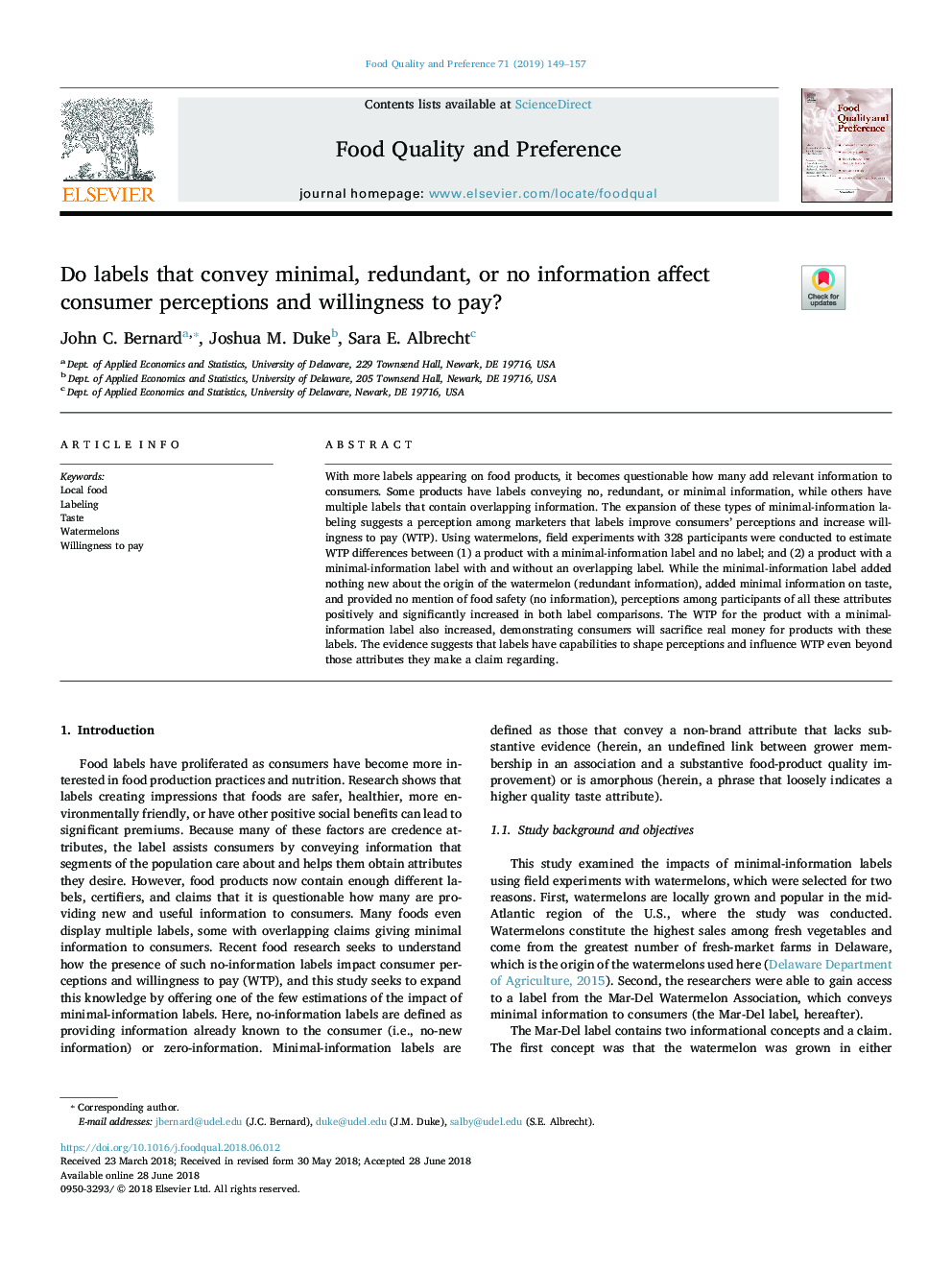| کد مقاله | کد نشریه | سال انتشار | مقاله انگلیسی | نسخه تمام متن |
|---|---|---|---|---|
| 8838366 | 1613129 | 2019 | 9 صفحه PDF | دانلود رایگان |
عنوان انگلیسی مقاله ISI
Do labels that convey minimal, redundant, or no information affect consumer perceptions and willingness to pay?
ترجمه فارسی عنوان
آیا برچسب هایی که حداقل، بیش از حد و یا بدون اطلاعات را انتقال می دهند، بر روی تصورات مصرف کننده و تمایل به پرداخت تاثیر می گذارد؟
دانلود مقاله + سفارش ترجمه
دانلود مقاله ISI انگلیسی
رایگان برای ایرانیان
کلمات کلیدی
غذای محلی، برچسب زدن، طعم هندوانه، تمایل به پرداخت،
موضوعات مرتبط
علوم زیستی و بیوفناوری
علوم کشاورزی و بیولوژیک
دانش تغذیه
چکیده انگلیسی
With more labels appearing on food products, it becomes questionable how many add relevant information to consumers. Some products have labels conveying no, redundant, or minimal information, while others have multiple labels that contain overlapping information. The expansion of these types of minimal-information labeling suggests a perception among marketers that labels improve consumers' perceptions and increase willingness to pay (WTP). Using watermelons, field experiments with 328 participants were conducted to estimate WTP differences between (1) a product with a minimal-information label and no label; and (2) a product with a minimal-information label with and without an overlapping label. While the minimal-information label added nothing new about the origin of the watermelon (redundant information), added minimal information on taste, and provided no mention of food safety (no information), perceptions among participants of all these attributes positively and significantly increased in both label comparisons. The WTP for the product with a minimal-information label also increased, demonstrating consumers will sacrifice real money for products with these labels. The evidence suggests that labels have capabilities to shape perceptions and influence WTP even beyond those attributes they make a claim regarding.
ناشر
Database: Elsevier - ScienceDirect (ساینس دایرکت)
Journal: Food Quality and Preference - Volume 71, January 2019, Pages 149-157
Journal: Food Quality and Preference - Volume 71, January 2019, Pages 149-157
نویسندگان
John C. Bernard, Joshua M. Duke, Sara E. Albrecht,
